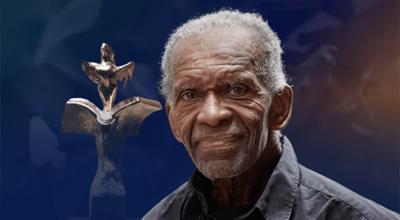Sandy Hook: What we’ve learned
Published 9:00 am Friday, December 13, 2013

Brandywine students walk the hallways at the middle/senior high school Wednesday afternoon. Leader photo/CRAIG HAUPERT
Jim Boger has made it his life mission to protect students.
As assistant principal at Brandywine High School and a reserve deputy for the Berrien County Police Department, most community members recognize his dedication to achieving this goal. What many may not know, however, is that as a student, Boger was a victim of school violence.
In 1976, when Boger was in fourth grade, a gunman shot through a window at his school, Southside Elementary in Mishawaka, Ind.
“Someone just shot at Mrs. Moorehouse’s window,” he said. “We all got down on the ground and they made us crawl out into the hallway.”
Boger remembers sitting in the dark hall as a teacher read to the students by a flashlight, attempting to keep everyone calm.
“He did shoot through the window, but he didn’t shatter it. It might have been a pellet gun or a 22, but it didn’t make a big hole,” Boger said. “He shot at us, and then later he drowned in the river.”
No one was injured in the shooting, but the potential impact of such an event has left a lasting impact on Boger’s life.
As assistant principal at Brandywine High School, Boger and the district have gone through several measures to keep the building as safe as possible. Following the shooting at Sandy Hook Elementary School a year ago this Saturday, Boger and other administrators at Brandywine began to take even more extensive measures.
“We changed some things immediately, but we had already done a lot of things,” Boger said. “The biggest thing we’ve done is we’ve changed how many doors we’ve had open.”
Previously the two center sets of doors on the front side of the school stayed unlocked all day so that visitors could check in in either side of the office. Now, only one set of doors remain open, and visitors have to check into Boger’s office.
“We are installing as we speak the buzzer systems. When you come to the door, you have to push a button, so the doors will all be locked. It’s an intercom system with a camera on it so we can see who’s there,” Boger said. “Sandy Hook had that, too.”
Boger said the most unsettling fact about the Sandy Hook shooting was that the school and the police department took all of the precautionary measures encouraged in the United States since the Columbine shooting in 1999.
“They had a buzzer system. They had cameras. They had practiced their lockdown drills. They did everything right,” Boger said.
“I actually got to go hear them talk at a conference,” he said, referring to the School Educators Police Liaison Association (SEPLA) convention that was held this summer. “One of the detectives from the Sandy Hook Police Department was there, and the superintendent. You could hear a pin drop the whole time as he was explaining what happened.”
Boger reported back to his school and other schools in Berrien County what he learned at the conference, and he said the county has a pretty established plan to combat school shootings.
“If you go into Buchanan or Niles or Berrien Springs, you’ll see the same kind of procedures as we practice here at Brandywine.”
“We always review our lockdown drills before the school year starts and what the procedures are, and then when we practice them usually the fire department and state police come. Once they’re in place, we go around and check if (the students and staff) follow the procedures correctly. Just about every time we do it there’s something we have to talk about or fix.”
Boger has done extensive research on school shootings, collecting a scrapbook of newspaper clippings from various school shootings over the last two centuries, and taking active shooter training classes through the Berrien County Police Department. However, Boger believes that schools can take every precautionary measure in the book and still not be able to eliminate the threat of violence completely, as he learned was the case at Sandy Hook.
“The bottom line is this: once they’re coming in, they’re coming in. We just have to slow them down,” he said. “The reality is if something were to happen here at Brandywine, multiple police units would be here within three to five minutes. The problem is that the shootings only last three to five minutes.”
Boger said the measures practiced within the school have trained himself and his staff to protect students before the three-to-five-minute timespan. New procedures and techologies have made it less convenient for intruders to enter the buildings, and in the event that someone finds a loophole in the system and gets in anyway, the staff is prepared with a plan to keep students and staff out of the line of fire.
“We are all just trying to keep our students safe,” said Boger. “We do the best we can, and that’s all we can do.”






